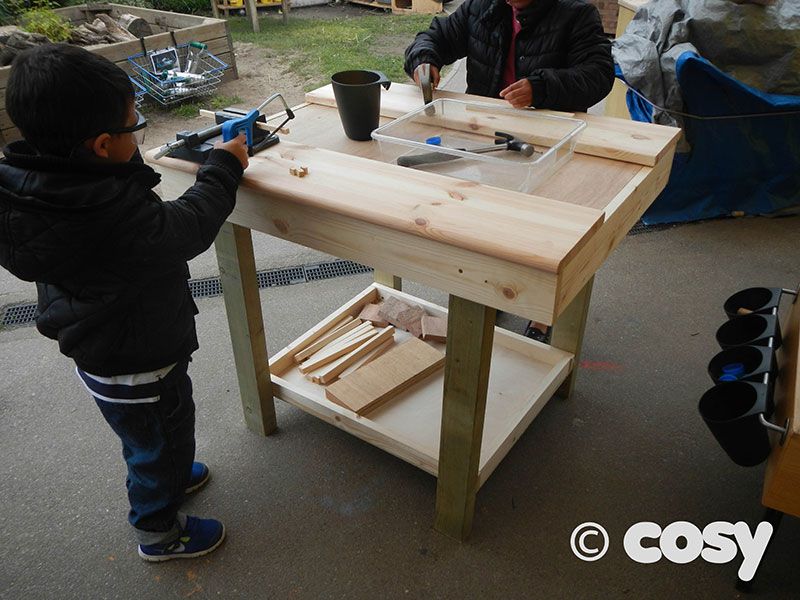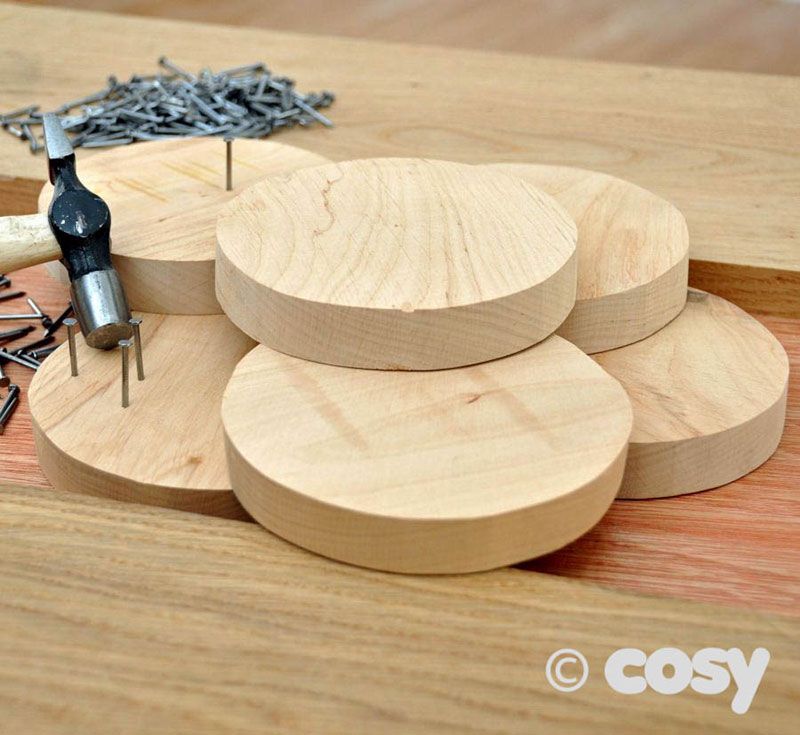Wonderful Woodwork in the Setting
Adding a woodwork area to your setting can be a wonderful way to inspire play and learning in a fun, hands on way. The nature of woodwork means that children are engaged in a rich, sensory experience which impacts on the holistic development of the child.
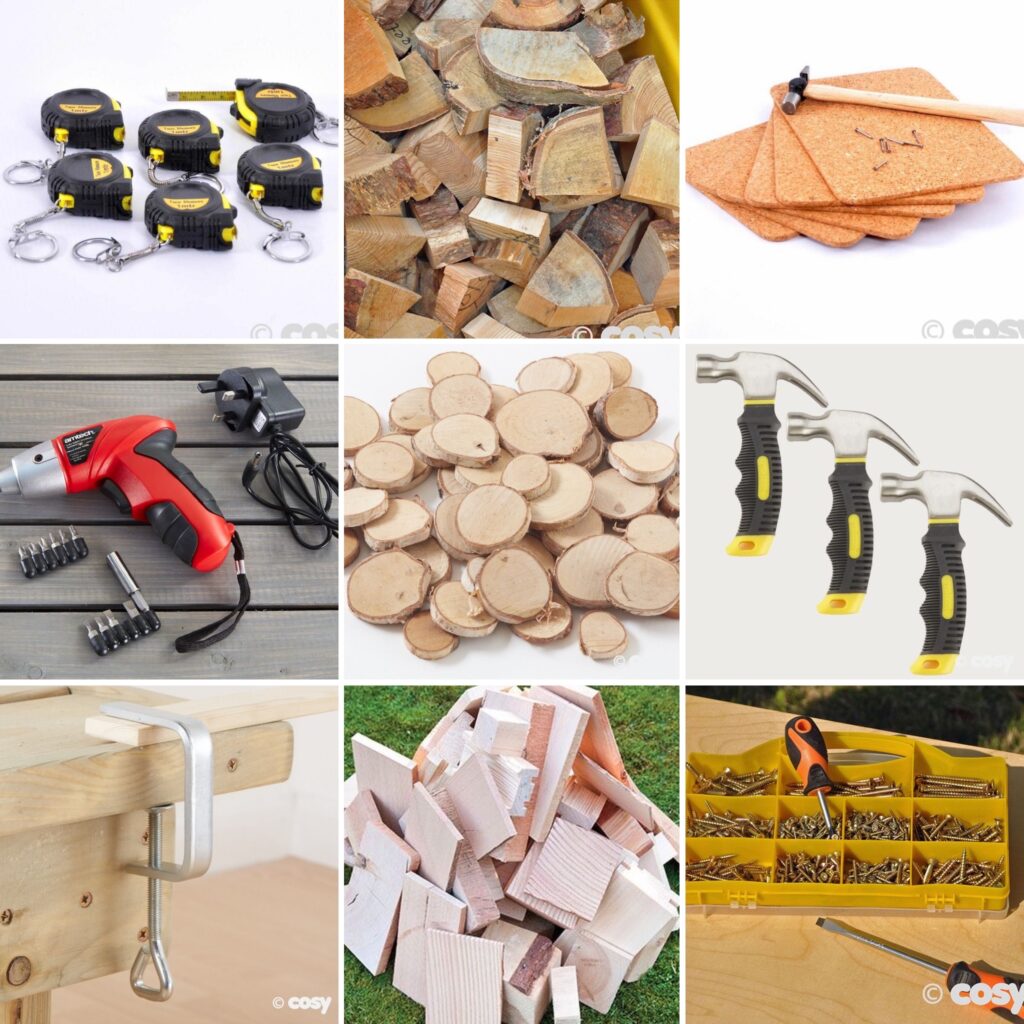
Getting started...
Firstly, communication with everyone involved is a good starting point. It's important to have the whole team on board as the provision of a woodworking area requires careful planning and supervision.
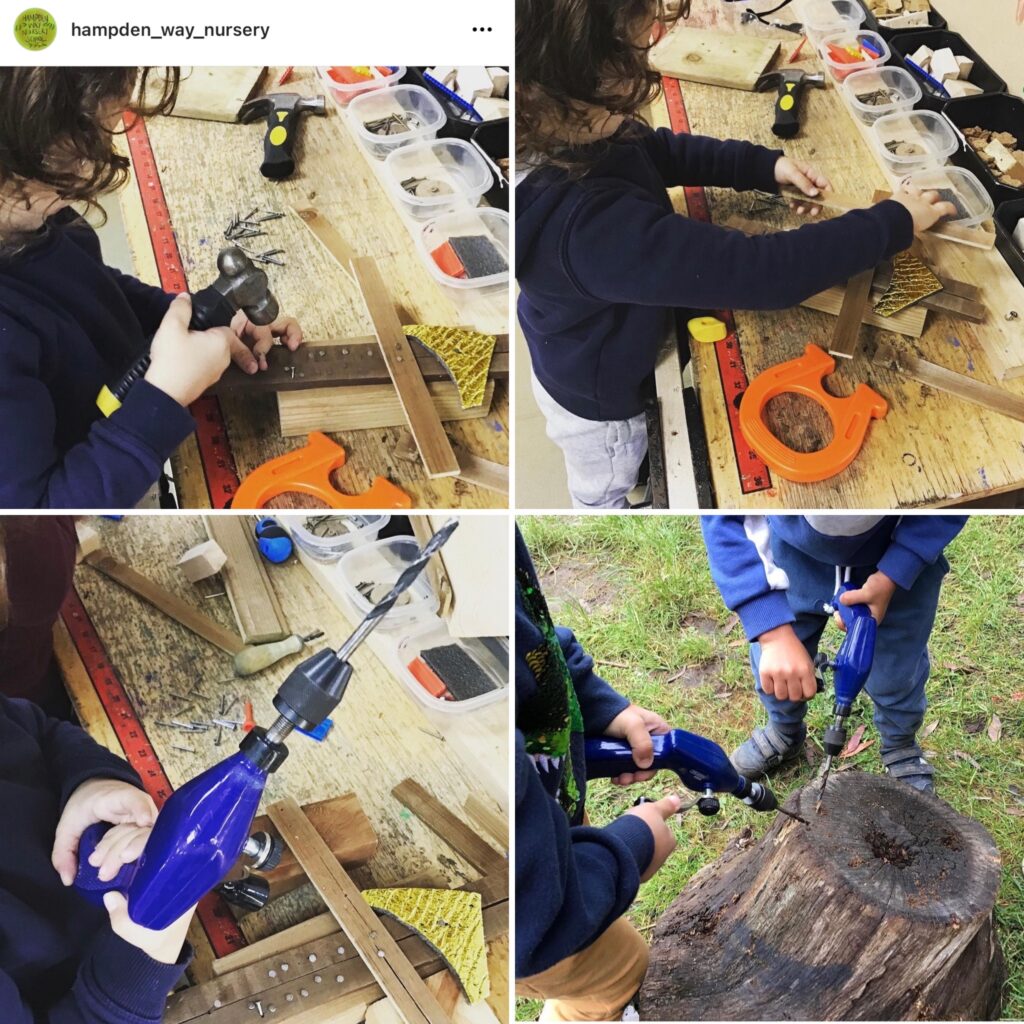
Carefully consider your existing provision -
- Where will your woodwork area be?
- Will it be easily accessible?
- How will you store wood and tools?
Next, you can plan for your equipment....the exciting bit! When starting out, it's sometimes good to just have the basics so that children (and adults) are not overwhelmed. As soon as you're up and running, you can take the lead from the children in regards to additional equipment required.
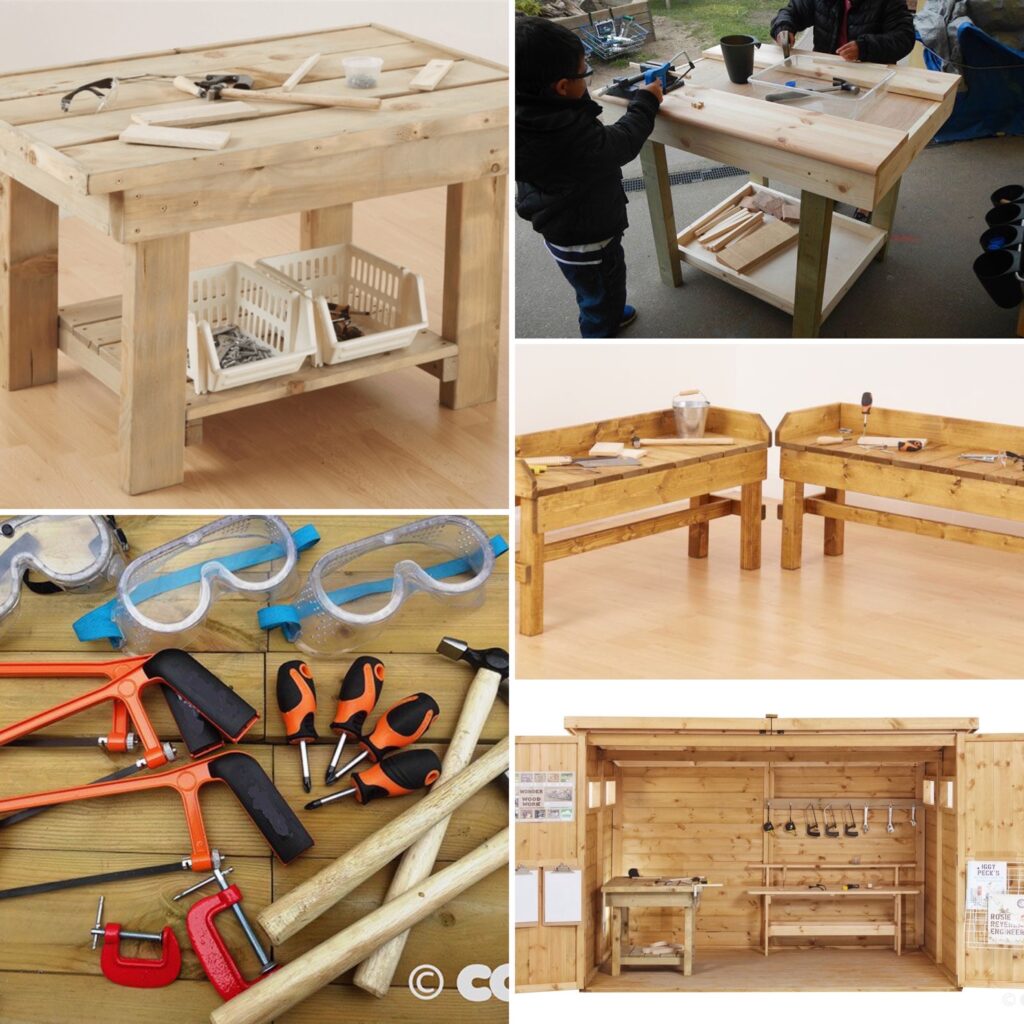
As a guide, the following are useful to begin with:
- A sturdy workbench
- Wood - Balsa is great for younger children just starting out
- Tools - hammers, screwdrivers, clamps, tape measures, sandpaper, saws and a hand drill
- Safety goggles

Before children begin playing in the area, it's important to carry out a thorough risk assessment. Although a woodworking area does come with risks, it is valuable to weigh these up against the benefits. This enables you to make a professional judgment in which you embrace the elements of risky play as they will be taking play in a controlled environment.
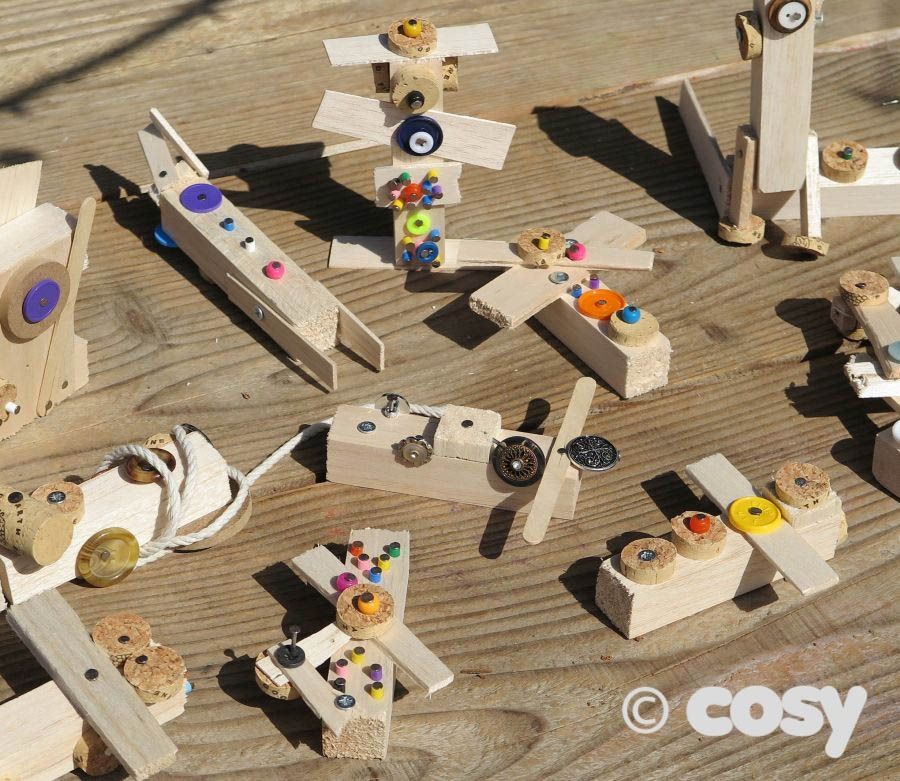
The area should always be well supervised. However, this supervision should not be overbearing. Children need to feel like they can independently explore, be curious and have a go.



Finally, it is vital that you prepare for this exciting enhancement to your setting by ensuring all adults are familiar with the policies, procedures and risk assessments related to this area. An understanding of their role in supporting play and learning is vital. Check out Pete Moorhouse wood work training information and guidance.
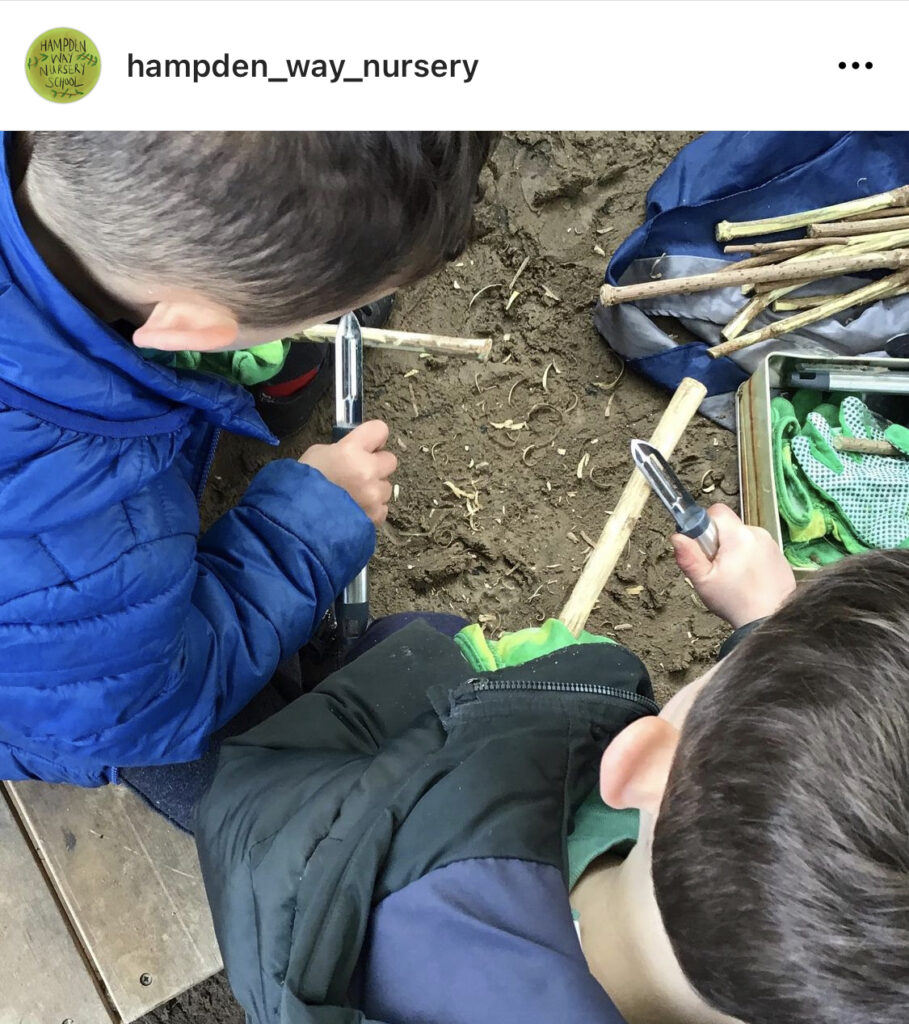
What are the benefits of woodwork?
Enhancing your provision with a woodworking area will reap many benefits. Not only is it fun and playful but children will be learning many different skills in a practical, hands on way. As they tinker, plan and construct, they will be developing hand eye coordination, fine motor skills, dexterity and precision. Woodwork requires problem solving and critical thinking, building cognitive skills and focus as children test their ideas and learn through trial and error.

Woodworking can be a collaborative experience, with children learning together as they create and construct in small groups. This gives rise to communication opportunities as children share ideas, make plans, ask questions of each other and engage in discussion. You will often find that wood working areas inspire rich vocabulary as children talk about shapes, sizes, position and plans.

The holistic nature of woodwork is what makes is so appealing. Children can really lose themselves in the moment as they become focused on their constructions. This high level of engagement is fascinating to observe. The more opportunities that children have to construct, the greater their skills become. They master techniques, helping them to realise their skills which is empowering. It is this which gives children an immense sense of fascination and satisfaction as they achieve what they had planned, seeing a project through from start to finish. Children quickly become competent, independent and curious learners, experimenting with wood, its properties, tools and ways of joining.

As woodwork is an open-ended play experience, there is no right or wrong. Children are free to explore and be creative in their thinking and construction. They can set their own challenges, work things out for themselves and at their own pace. Through this, children learn that they are capable individuals. As they tinker and explore, they persevere, show determination and self-belief and develop in confidence.
What will you build?




In the early days, children will probably just be happy to 'have a go'. The woodworking area will be a novel, new way to play so expect it to be popular! As children become more accustomed to the space, they will bring their own ideas. This might start with a simple boat or rocket - thing they can easily make themselves brings a sense of achievement. In time, you can encourage more ambition with your projects, whether these are individual or group based.
We'd love to see what you create in your woodworking area. Don't forget to tag us on our social media channels.





We hope that you have got lots of ideas to take away from this woodworking post.
Don’t forget to share your activities with us on our social channels!
Facebook: https://www.facebook.com/cosydirect/
Twitter: https://twitter.com/cosydirect
Instagram: https://www.instagram.com/cosydirect/
With thanks to The Cosy Creatives for this blog post.



